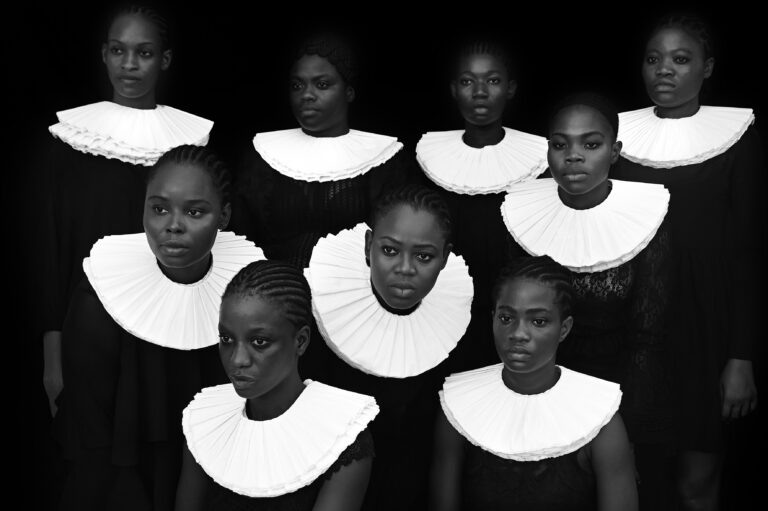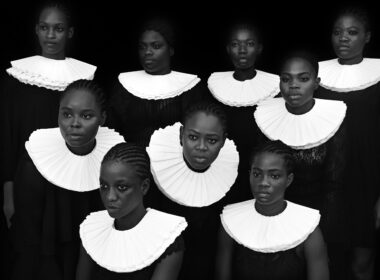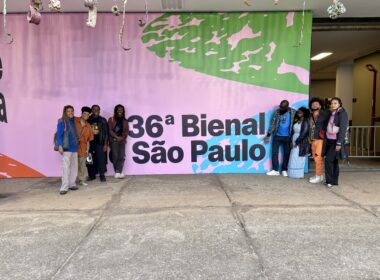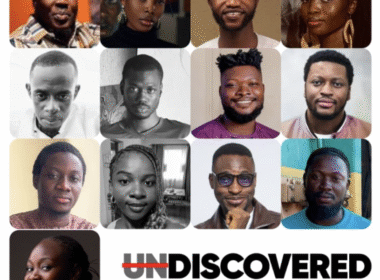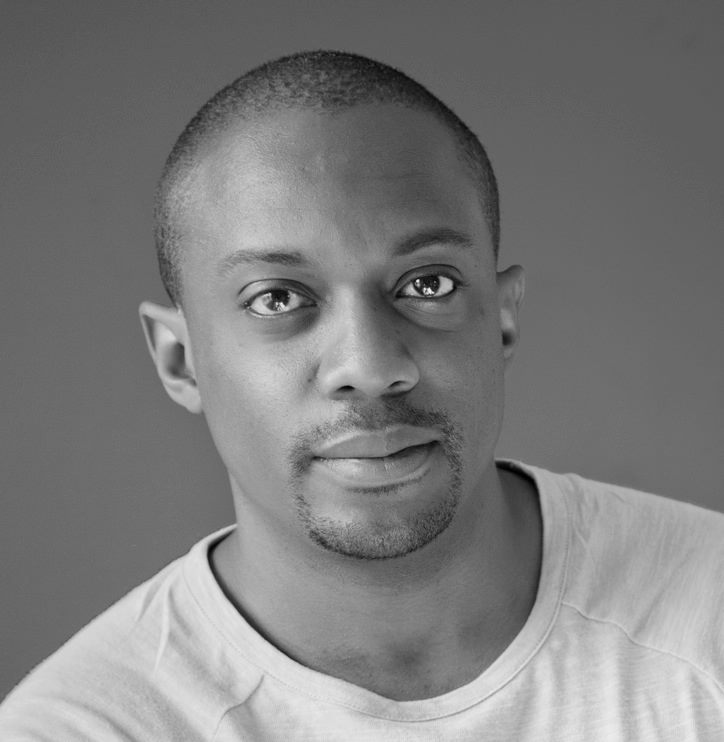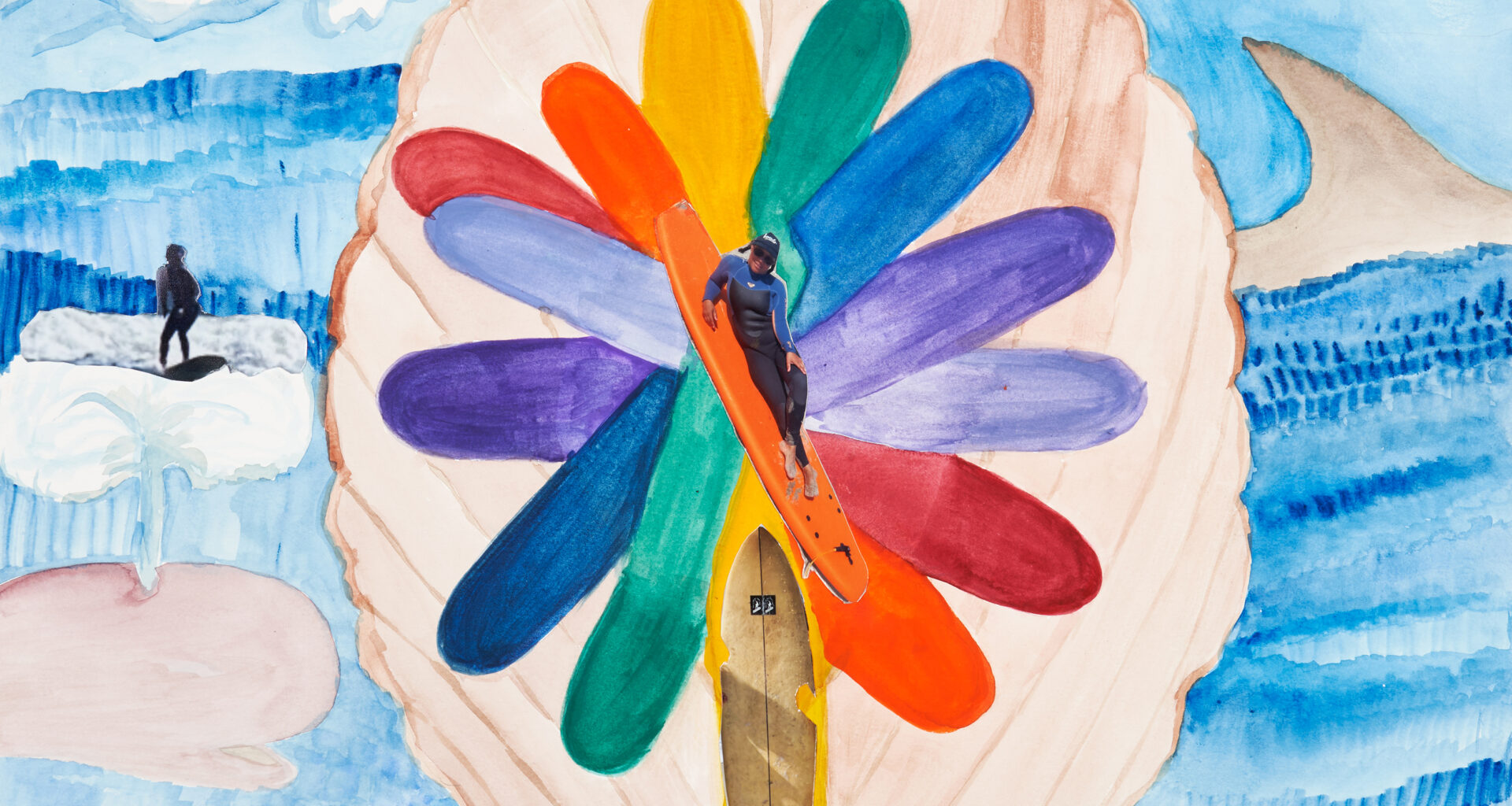Hank Willis Thomas is a busy man. With several public art projects, exhibits on at least two continents, new projects on deck and a personal life, Mr. Thomas has quite a bit going on. During Art Basel Miami Beach, you will find Hank Willis Thomas inside the Miami Beach Convention Center, outside the Bass Museum and at the Opa-Locka Community Development Corporation community art space. Rosie Gordon Wallace and I had a quick chat with Hank as he prepared for his whirlwind trip through South Florida.
At what moment did you realize that you were an artist?
I realized that I was an artist … I have a hard time distinguishing being an artist from being a human being. I think I realized that I could make a living as an artist actually when I did my first solo show at the Diaspora Vibe Gallery, which was run by Rosie Gordon-Wallace in Miami in 2004. Up until then, although I’d gone to school as an artist for … I’d studied photography, studied art. I just saw myself trying to work out my own questions about the world. I didn’t really think that people would be interested in what I had to say.
What motivates you to create?
Breathing
What emotions/ideas do you try to convey in your work?
I try to represent questions more than I try to represent answers. I try to represent the questions that I struggle with as a human being, as a man, as an African-American, as an American, as a person living in this time. I really am always trying to probe questions more than I am trying to come to conclusions.
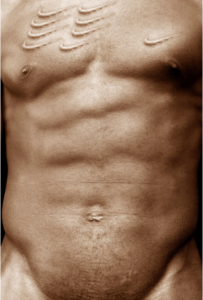
Scarred Chest, 2004 by Hank Willis Thomas
How do you Execute/ make art?
No idea. I just talk to a bunch of people, and the medium of the work depends on the ideas that come out of the conversations that I have with people about the questions I have.
What do you want people to come away with from your art?
I want them to walk away with deeper, more thoughtful, questions about things that they think they already know. I want them to challenge themselves and others to think differently about the world, about politics, about identity structures, and about power structures. Not only taking things for what they appear on the surface but really digging in deeper to how things got to be the way they are and how they might need to change.
What does it mean to be a Black Visual Artist in the USA today?
I’m not that interested in that challenge question because I don’t think that the United States is the most important place where Blackness exists. I think I want to think about myself as a global citizen and as a human being. I’ve traveled a lot to Africa. I’ve traveled a lot around the Caribbean. Not as much in South America. But, I’ve realized that Blackness, as the question suggests, is different in every place. Most importantly, even in Europe, I’ve come to understand that Blackness is a figment of our imagination. I struggle with the definition of Blackness, not only because my skin is brown, but because Blackness was created by Europeans with a commercial interest in dehumanizing us.
I struggle to use a term, which does not define me physically, morally, with the connotations that come along with it. Or, in any way. I struggle to define myself in a term that is so monolithic and relates on a binary of Black and White. I believe that we all actually live in hues of brown. If you want, gray. For me, being a Black Artist in the United States is living a conundrum.
How does Class, Race, Sexual orientation, age, religion or other factors impact your identity as an artist?
I think I’m much more aware of my class, particularly as I feel like my class status has grown, meaning that I have a level of mobility even though I may not have a level of income. I have a level of mobility that allows me to interact with people of high net worth and social status and power. That sometimes, not always, sometimes transcends geographic, sexual, racial, religious and generation boundaries.
You’ve had a busy year: Young Black and Gifted in South Africa, your work with the Public Art Fund, Unbranded. Your creativity is boundless. Where do you currently draw your inspiration from?
As an artist, I’m always trying to become a better person. James Baldwin said that an artist’s pursuit for their integrity was a metaphor for the pursuit of all human beings on the face of this terrifying globe to get to become human beings. When I make work, I’m trying to challenge myself and others to be a better person recognizing that we are all complex, but we are all also beautiful, and we are all also potentially dangerous, mostly because of our willingness to ignore and to be ignorant. I draw inspiration from living, from the people who are courageous, who are fearless, who live on the edge, but also are the people who are afraid to live. My work is trying to be in conversation with them.
Your work for the Art of Transformation comes at a critical time for Black men and women in the United States. We have the protests at the University of Missouri, the defamed photos at Harvard Law School and Laquan McDonald’s murder in Chicago. Have these events inspired new work?
I continue to do what I do. I feel encouraged, I feel humbled, I feel inspired, I feel challenged, I feel indebted by the generation just below me who will not go quietly into the night. Will not be passive in the face of injustice like so many of my generation did, but so many of my parent’s generation did not. I think this is an incredible moment to be alive with a lot of responsibility. It’s an incredible moment to be an American, and it’s an incredible moment to be an artist because as I said being an artist is akin to being a human being. Therefore, our responsibility is to improve ourselves and hopefully improve the lives of others through our communication and our empathy and our audacity and hopefully generosity.
The City of Opa-Locka is working to change the face of the city. Are you working with the Opa-Locka Community Development Corporation for future projects?
I am not sure what I’m at liberty to say but I hope to work on some projects with Opa-Locka. It seems like a great place, and we are doing exciting things.
Besides your work in the Art of Transformation, what projects will you show during Art Basel Miami Beach?
I will be showing sculptures with the Jack Shainman Gallery and the Goodman Gallery about sports and protest. I will be presenting in the public art sector in Collins Park a sculpture that’s about speech.
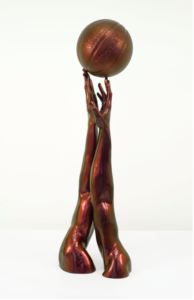
Tip Off, 2004 Polyester Resin and Chameleon Paint by Hank Willis Thomas
What can we expect from you artistically in 2016?
We shall see.
What advice would you give early career artists that are working toward being a highly collected artist?
… I would never advise anyone to make art for money because chances are you’re not going to make money. The most you can hope to do is touch hearts, improve yourself as a person, and maybe improve the lives of people who interact with your work. If you’re lucky, and really only if you’re lucky, someone will be willing to pay for that. My only advice about being an artist is don’t be realistic because the chances that you will have a successful commercial career is totally unrealistic. So often people get caught up with how much it will cost and what they can get out of it, but that’s like saying, “What am I going to get out life?” The only thing you can hope to get out of it is happiness.
